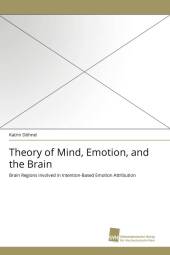 Neuerscheinungen 2011Stand: 2020-01-07 |
Schnellsuche
ISBN/Stichwort/Autor
|
Herderstraße 10
10625 Berlin
Tel.: 030 315 714 16
Fax 030 315 714 14
info@buchspektrum.de |

Katrin Döhnel
Theory of Mind, Emotion, and the Brain
Brain Regions involved in Intention-Based Emotion Attribution
2011. 120 S. 220 mm
Verlag/Jahr: SÜDWESTDEUTSCHER VERLAG FÜR HOCHSCHULSCHRIFTEN 2011
ISBN: 3-8381-2515-0 (3838125150)
Neue ISBN: 978-3-8381-2515-2 (9783838125152)
Preis und Lieferzeit: Bitte klicken
Theory of Mind (ToM) defines the ability to understand other peoples´ behaviour and emotions by understanding their mental states such as beliefs or intentions. In ToM research there is an interesting developmental course: When someone´s intention is fulfilled, 2- to 3-year-olds attribute good emotions to the other, and they attribute bad emotions when his or her intention is not fulfilled. This process is defined as intention-based emotion attribution. Things get complicated in the case of fulfilled immoral intentions. While 4- to 5-year-olds ignore the immoral aspect by solely attributing "happy victimizer" emotions to the other, 6- to 7-year-olds attribute mixed emotions: A fulfilled intention makes someone feel good; but the moral rule violation also causes bad feelings. By using functional magnetic resonance imaging (fMRI) in adults this work investigated neural networks of intention-based emotion attribution, and revealed common neural activity associated with non-immoral (neutral) and immoral intentions. This indicates that the development of neutral and immoral intention understanding might be associated with the maturation of common rather than distinct brain regions.


